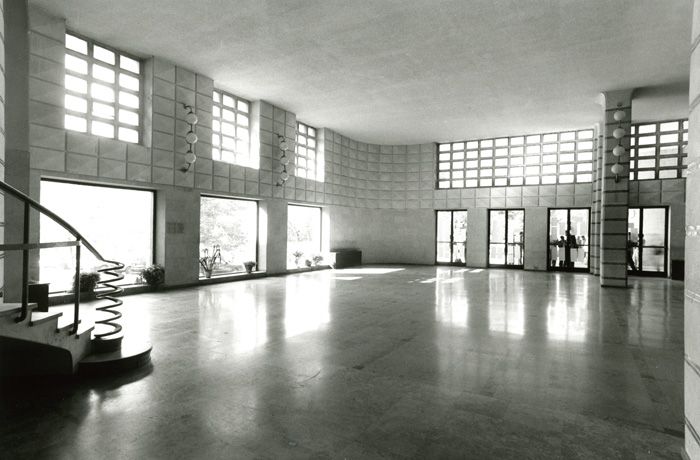Talk by Bernd Nicolai
Salt Beyoğlu
January 18, 2012 18.30

Photo by Markus Hilbich
Entrance hall of Ankara University Faculty of Languages, History and Geography, designed by Bruno Taut (1937-1940)
Entrance hall of Ankara University Faculty of Languages, History and Geography, designed by Bruno Taut (1937-1940)
The Docile Body: Transfer, Translation and Reaction in Turkish Architectural Modernism 1930 to 1950
SALT Beyoğlu, Walk-in Cinema
Modern Turkey, a creation of Mustafa Kemal Atatürk and his devoted followers, was based on a radical modernist project, its strongest representation being the new capital, Ankara, and modern public buildings. Although Atatürk’s claim was “to be western in spite of the West,” European Modernism served as the normative paradigm for social life as well as for art and architecture. Germany and Austria - as a result of the long-lasting tradition of the transfer of know-how and because of the close relationship with Turkey during the First World War - took the lead in architecture and urban planning matters after 1927. In addition to the various transfers of modern (non-avantgardist) architecture, the architectural education system was re-structured, namely by Ernst Egli at the Academy of Fine Arts. Transfer not only meant the infiltrated import of architectural models, but also the recognition of and adaption to local conditions and cultural settings in Turkey. In this sense, transfer led to translation, and the creation of a new Turkish modernism as part of a larger regionalist modernism that could be observed in peripheral sites such as South America and the Mediterranean.
1920s Turkey may be seen as a “docile body” for such influences, but during the 1930s and 1940s, the formation of a new architectural discourse resulted in a sense of self-awareness in cultural production; Turkish architects attempted to develop new perspectives. However, an affinity with Germany was created once again with the creation of the so-called “Second National Style” in the 1930s, and once again, a delicate situation emerged as immigrant architects and artists who fled Nazi-Germany were in influential university positions or took posts as civil servants. After the Second World War, American influence changed the cultural and architectural climate completely, and new paradigms were set up in the 1950s. Spanning three decades, Bernd Nicolai’s presentation will explore this complex era, introducing new research from recently discovered archives.
Bernd Nicolai is an art historian with a focus on medieval as well as modern architecture and sculpture (19th and 20th century). Nicolai teaches at the Institute of Art History at the University of Bern where he is the chair of Architectural History and Monument Preservation since 2005. In 2011, he joined the Sinergia research group “The Interior: Art, Space and Performance.” He has a published book, entitled Moderne und Exil: Deutschsprachige Architeckten in der Turkei, 1925-1955 [Modernists and Exile: Germanspeaking Architects in Turkey, 1925-1955], (Berlin: 1998). Nicolai’s talk in the Walk-in Cinema will take place within the context of Gülsün Karamustafa’s Modernity Unveiled/Interweaving Histories installation, on view at SALT Galata until January 22.
The talk will be held in English.

